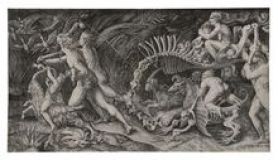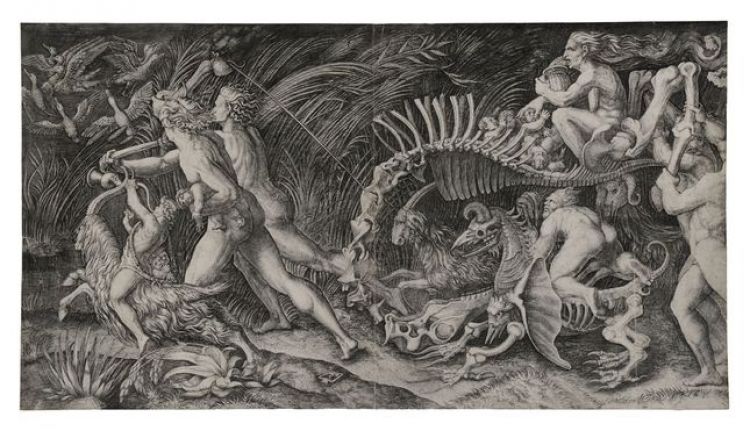Witches' Sabbath

This print is one of the largest and most impressive engravings of the Italian Renaissance. The work has been given several different titles, all related to witchcraft. It is traditionally attributed to Marcantonio Raimondi and Agostino Veneziano, two engravers active in Rome at the beginning of the 16th century.
We see four men dragging along a gigantic, unidentified carcass ridden by a dishevelled hag who is gloating over her captive haul of infant victims. She may be plotting to boil them down to concoct some devilish ointment. The grotesque cortege is accompanied by another monster, skeletal and two-headed. Next to it are two roguishly capering goats. This spine-chilling image may be linked to the Malleus Malificarum, a treatise on the identification of witches published in Strasbourg in 1486.
The engraving translates into images this witch phobia that swept across Europe in the early 16th century.
